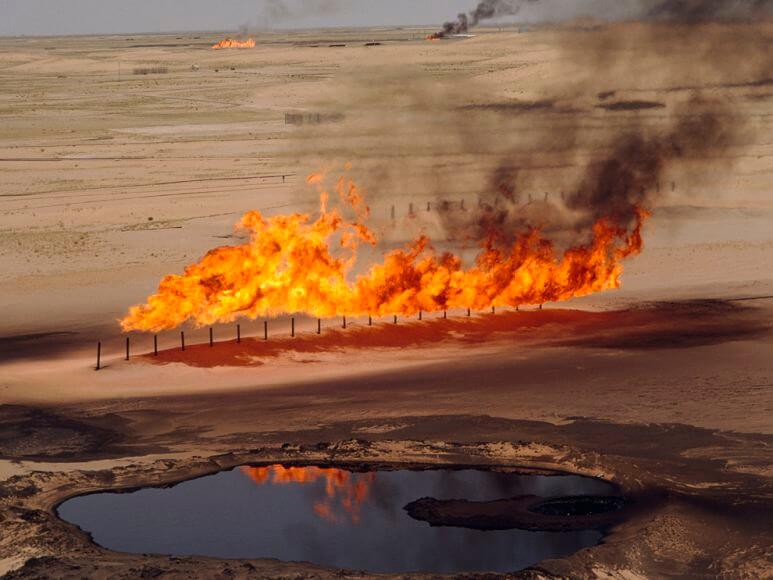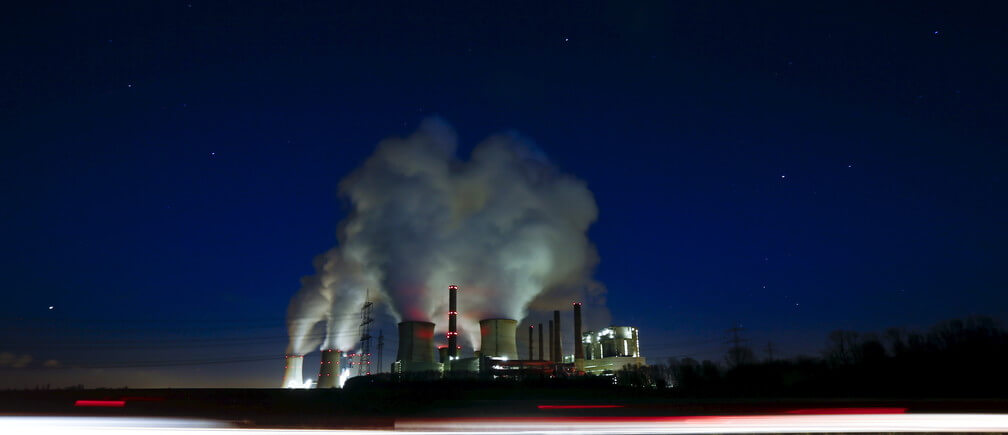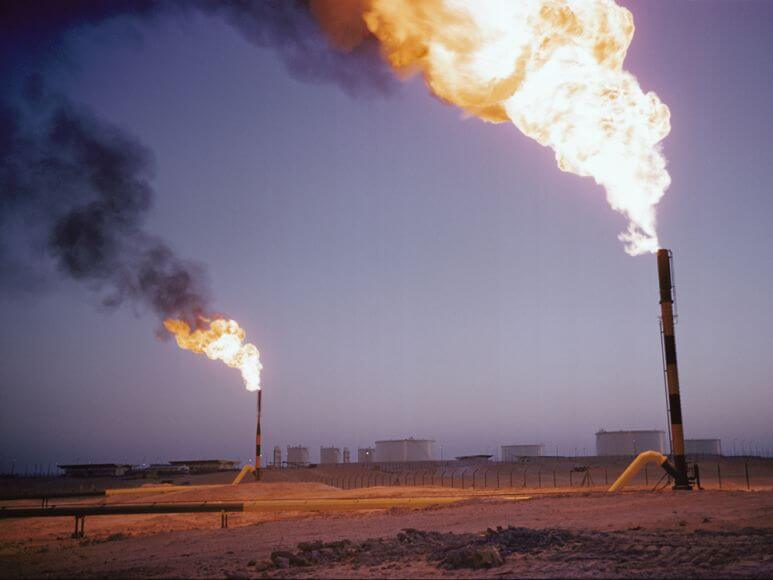Natural gas has numerous characteristics that make it a productive, moderately clean-consuming, and valuable energy source. In any case, the creation and utilization of gaseous petrol have some ecological and well-being issues to consider.
Petroleum gas is a moderately perfect consuming non-renewable energy source.
Consuming natural gas for energy brings about fewer emanations of virtually a wide range of air poisons and carbon dioxide (CO2) than consuming coal or oil-based goods to create an equivalent measure of energy. Around 117 pounds of CO2 are produced per million warm English units (MMBtu) like natural gas contrasted and more than 200 pounds of CO2 for each MMBtu of coal and more than 160 pounds for every MMBtu of distillate fuel oil. The spotless consuming properties of natural gas have added to expanded petroleum gas use for power age and as a transportation fuel for armada vehicles in the US.
Petroleum gas is principally methane — a solid ozone-harming substance.

A few petroleum gas spills into the air from oil and natural gas wells, capacity tanks, pipelines, and handling plants. The U.S. Ecological Assurance Organization gauges that in 2020, methane discharges from natural gas and petrol frameworks and deserted oil and natural gas wells were the wellspring of around 33% of absolute U.S. methane discharges and about 4% of total U.S. ozone-depleting substance emissions.
The oil and natural gas industry do whatever it may take to forestall petroleum gas spills. The U.S. Energy Data Organization (EIA) gauges that in 2021, U.S. CO2 outflows from natural gas ignition for energy represented around 34% of all U.S. energy-related CO2 emanations.
Gaseous petrol investigation, boring, and creation influence the climate
When geologists investigate for gaseous petrol stores ashore, they might upset vegetation and soil with their vehicles. Penetrating a petroleum gas well ashore may require clearing and evening out a region around the well site. Well-boring exercises contaminate the air and may upset individuals, untamed life and water assets.
Also Visit, Council take ownership of horse that lived in woman’s living room
Laying pipelines transporting petroleum gas from wells requires a clearing area to cover the line. Natural gas creation can likewise deliver vast volumes of debased water. This water requires appropriate dealing with, stockpiling, and treatment, so it doesn’t contaminate land and different waters. Petroleum gas wells and pipelines frequently have motors to run hardware and blowers, which produce air contaminations and commotion.

In regions where natural gas is delivered at oil wells, it isn’t efficient to ship available to be purchased or contains high convergences of hydrogen sulfide (a harmful gas). It is scorched (erupted) at good destinations. Natural gas discharging produces CO2, carbon monoxide, sulfur dioxide, nitrogen oxides, and numerous different mixtures, contingent upon the synthetic arrangement of the petroleum gas and how well the natural gas is consumed in the flare. Be that as it may, erupting is more secure than delivering natural gas out of sight. It results in lower generally ozone-harming substance discharges since CO2 isn’t a severe area of strength for as much ozone-harming substance as methane.
Progresses in boring and creation advancements significantly affect the climate.
New penetrating and natural gas recuperation innovations lessen the land region that is upset to foster oil and gas assets. Even boring directional strategies make it conceivable to deliver more natural gas from a solitary well than before, so fewer wells are essential to foster a petroleum gas field.
Water-driven cracking (generally called hydrofracking, deep earth drilling, or fracing) of shale, sandstone, and carbonate rock arrangements is opening up vast stores of natural gas that were already too costly to even think about creating. Deep earth drilling includes siphoning fluids under high tension into a well to crack the stone, which permits natural gas to escape from the rock. Making gaseous petrol with this method solely affects the climate:
The cracking of wells requires a lot of water. In a specific region of the country, vast utilization of water for deep oil drilling might influence sea-going environments and the accessibility of water for different purposes.
Whenever botched, water-powered breaking liquid — which might contain possibly hazardous synthetic compounds — could be delivered through spills, releases, broken healthy development, or other openness pathways. These deliveries could pollute encompassing regions.
Water-powered cracking produces a lot of wastewater at the surface, which might contain broken-down synthetics and different pollutants that require treatment before removal or reuse. Given the amounts of water delivered and the intricacies innate in treating a portion of the wastewater parts, fair treatment and disposal of the wastewater are significant.
As the U.S. Geographical Review indicates, water-powered breaking “…causes little quakes, yet they are often too little to be a security concern. Notwithstanding natural gas, deep earth drilling liquids and arrangement waters are returned to the surface. These wastewaters are habitually discarded by infusion into deep wells. Infusing wastewater into the subsurface can cause tremors that are sufficiently huge to be felt and may cause harm.”

Natural gas could be delivered to the air during and after well dull, and how much these deliveries are being scrutinized.
Gaseous petrol creation, transportation, dissemination, and capacity require strict security guidelines and principles.
Since a petroleum gas break could cause a blast, strict unofficial laws and industry norms are set up to guarantee the protected transportation, stockpiling, dissemination, and utilization of natural gas. Since handled petroleum gas has no scent, natural gas organizations add severe strength areas for an egg-like smelling substance called mercaptan to petroleum gas so that individuals can smell spills.
Gaseous petrol is a much ‘dirtier’ energy source than we suspected
Coal, oil, and gas are liable for considerably more barometrical methane, the super-powerful warming gas, than recently known.
In the central part of a Greenland summer fieldwork in 2015, Benjamin Hmiel and his group penetrated the enormous ice sheet’s frozen innards, occasionally pulling up a cruiser motor estimated lump of glasslike ice. The ice held a piece of the solution to an inquiry that had vexed researchers for quite a long time: What amount of the methane in the air, one of the most powerful wellsprings of an Earth-wide temperature boost, comes from the oil and gas industry?
Beforehand, geologic sources like volcanic leaks and gassy mud pots were remembered to let out around 10% of the methane in the climate every year. Yet, new exploration distributed for this present week in Nature recommends that traditional geologic sources make up a lot more modest part of the methane in the current environment. The specialists say that methane is doubtlessly owing to industry. Added up, the outcomes show we’ve misjudged the methane effects of petroleum product extraction by up to 40 percent.
That is both terrible information for environmental change and fabulous, says Hmiel, the lead creator of the review and a scientist at the College of Rochester. Terrible because it implies that oil and gas creation has had a more chaotic, more significant effect on the ozone-harming substance financial plan than researchers knew. However, Hmiel finds the outcome empowering for practically a similar explanation: The greater the number of methane discharges that can be pinpointed to human movements like oil and gas extraction, the more control it implies policymakers, organizations, and controllers need to fix the issue.
The energy blend is moving across enterprises. Fostering a five-to-ten-year system can help oil and gas organizations explore the long haul.

The basic to lessen the adverse consequences of worldwide environmental change turns out to be direr as time passes. Therefore, a rising number of nations and organizations are promising to become carbon nonpartisan by 2050, and petroleum derivative market interest are set to decline, especially in oil and gas. Of the two, gas seems, by all accounts, to be stronger in the years to come, particularly melted natural gas. However, even LNG will, at last, be subbed by sustainable power sources or go through discharge relief to meet the prerequisites of a 1.5-degree pathway (see the sidebar “The significance of a 1.5-degree pathway”).
Meanwhile, worldwide, extensive activity is expected to diminish CO₂ and methane emanations across all ventures, including oil and gas. To begin with, in any case, the business should address enormous difficulties. In any case, while oil and gas organizations have similar motivators to diminish Degree 1 and 2 outflows (from activities and purchased fuel) as organizations in other energy-escalated businesses, they likewise face expanding strain to address Extension 3 emanations (from products).1 Furthermore, changing guidelines and quickly developing client and cultural assumptions around clean energy make it challenging to figure out which resources across the creation cycle should take on new advances to decarbonize and which should be abandoned.
Gas and LNG organizations dealing with the energy change will receive financial and natural rewards. Organizations need to impart an unmistakable five-to-ten-year methodology enumerating certain vital activities that can be taken today instead of declaring long-haul focuses that disregard the present moment. This article talks about the flexibility of gaseous petrol and LNG. It frames three vital methodologies for overseeing decarbonization: lessening the carbon impression of resources and clients, managing risk by incorporating outflows costs into business choices, and improving the strength of portfolios.
The energy area is evolving.

As of late, the energy area has radically expanded its emphasis on manageable, challenging resources and sustainable power sources. Two subsequently, a few fundamental movements are modifying the drawn-out eventual fate of organizations along the whole worth chain.
In the first place, the energy blend is moving. The world is progressively charging, with sustainable power sources expected to get together to 80 percent of worldwide interest by 2050. Up to this point, clean-energy speculation has generally been level (30 to 37 percent all out).
Capital business sectors are additionally remunerating expected development in renewables, and financial backers worried about change gambles and abandoned resources are starting to strip from petroleum products. Ecological, social, and administration contributing, representing around 30% of resources under administration, is fixing its measures, while lobbyist contributing pushes influence through designated goals.
Accordingly, partners are progressively calling for responsibilities to emanation decreases and for change intending to guarantee the security of future inventory. A few legislatures and controllers use their strategy powers to move decarbonization by impacting requests instead of depending on direct guidelines. Carbon charges in Norway are only one model.
At long last, ecological awareness has become significantly broader, entering the political standard in many business sectors. Specifically, Age Z is progressively compelling, frequently leaning toward organizations with express maintainability drives. Numerous clients accept that conventional oil and gas exercises don’t align with natural awareness. Accordingly, associations that are reluctant to adjust their organization societies and approaches to working might battle to draw in the ability expected for a change.
The versatility of gaseous petrol and LNG

Even with altering viewpoints on petroleum derivatives and expanding zap, the oil and gas industry must make a prompt move to plan for the years to come. One such activity is increasing the portion of petroleum gas in portfolios.
Our reference case shows that gas, dissimilar to other petroleum products, will encounter developing interest until the mid-2030s. In a 1.5-degree environment pathway situation, petroleum gas will be more potent than other non-renewable energy sources for one more five to a decade. This is principal because petroleum gas is among the cleanest petroleum derivatives, so it will be the last to be supplanted as a component of the energy progress.

